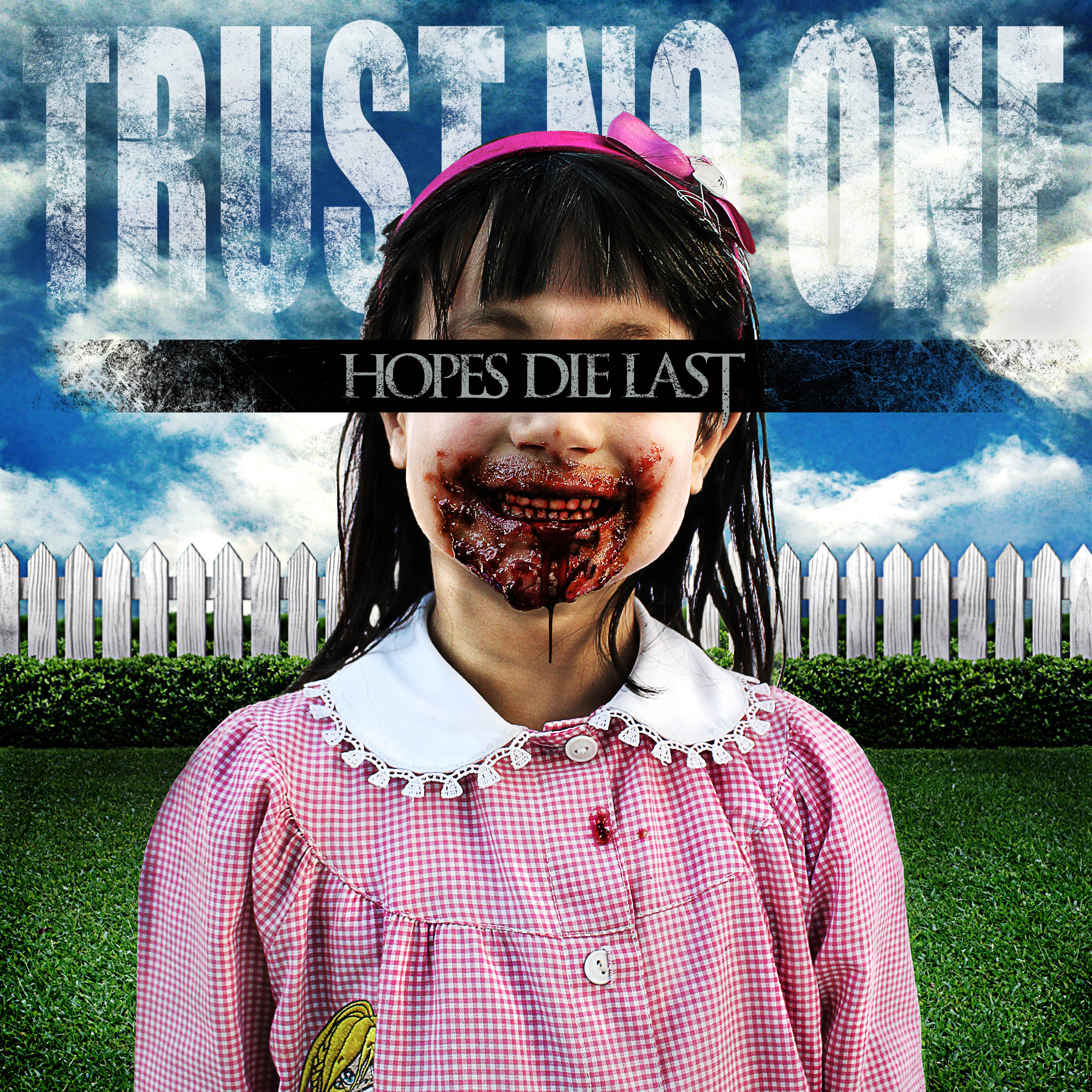
Album Review: Hopes Die Last - "Trust No One"
Hopes Die Last wants to grab your attention and not let go. The first vision of the band most people encounter will be their cover art, which is wonderfully grisly and disturbing and gory all at the same time. The album behind that image is a mixed bag of emotions, tempos and styling, built upon an intentionally rocky foundation to keep the listener engaged in the same manner that a high-speed car chase does. Whatever is around the bend remains a mystery until the album is right directly on top of it.
Now, as with all such recklessly ballistic albums, sometimes it avoids whatever that obstacle that is, and sometimes it smashes headlong into the wall and can't recover.
There are good things going on here, though metal purists may be too preoccupied by the marketable alt rock to notice them. Hopes Die Last is not some half-baked teenage rock band that barely understands chord progression and was thrust into the spotlight by a bald, middle-aged, seersucker-suited promoter who thinks he understands "what the kids want." Rather, this is a band that has carefully mapped out what they want their sound to be and is not only working to advance themselves in that sound, but has been surrounded by capable producers and engineers in order to represent that sound best.
The band's best quality is their ability to keep the listener guessing. Just as you become comfortable with the style of a particular cut, the band will switch gears, whether from singing to screaming, rock to metal or any variation of those combinations, to give you a whole new sound to capture your ears. This all speaks to what we talked about at the top; the band's talent for shifting into something new without needing to slow down, change tracks, or even take a pregnant pause. Without this kind of rapid, unanticipated switching, a song like “Unleash Hell,” with its full-tilt run turned into a dirty thudding rhythm and back again might have come off as one-dimensional.
That said, there are some issues here, too. One of the things plaguing this entire movement in the modern rock/metal scene, and is true not only for Hopes Die Last but all of their label mates on Standby Records, is the fundamental question of what band they really want to be. It's a difficult line to tread in this so-called “Rock and Roll 2.0” movement, trying to be both a rock band with broad-based teenage appeal and a full-throat metal band. Not one of these bands, even the vaunted Black Veil Brides, has been able to mix a liquid solution to satisfy this basic conundrum. Hopes Die Last turns the tables a little and uses the imbalance to give their music another dimension, but it's still jarring and a little messy, and practically requires the listener to evaluate the album from two fronts.
On the occasions when the band smoothes out the wrinkles and writes with unity of purpose and sound, Hopes Die Last can be an effective band with some solid gallop and punch. Songs like "Bill’s Got Only a Pair of Queens" and "Life After Me Life After You" prove this to be true, and are the band's best example of their dedication to craft and heavy metal capability. In their incarnation as a thin-voiced alt rock band however, Hopes Die Last hits a long, lazy fly ball rather than a screaming home run.
There were a couple questionable decisions on this album, including incorporating the unapologetic techno style of Nekso into the album’s closer “Keep Your Hands Off.” The sudden infusion of techno beats and bop-along pace seems out of place. The same can be said for the cover of Katy Perry’s “Firework,” which is ambitious, but not wholly necessary. Hopes Die Last is a talented enough band that they needn’t include a gimmicky cover to get over.
In summary, while fitting nicely into the image of the hot new sound on the alt rock and metal scene, and meshing nicely with their label mates in the definition of that image, Hopes Die Last is victim to the same pitfalls as those other bands. So, if you're a fan of this new wave, or have the patience to overlook those faults, this album is a solid listen with some really well executed elements. Metal purists will probably still pull their hair out over how this wave of music gained popularity, but it seems here to stay, at least in the terms of the modern, fickle, consumer-driven market.

